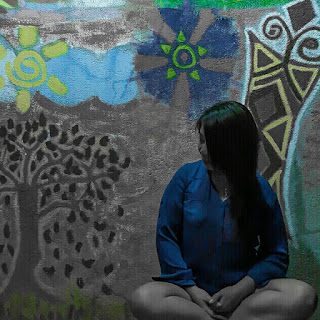babes and other such nonsense
When an Asian woman hits her fourth decade, 7-3 she's done for. There is realistically no Julia-Roberts/Nicole-Kidman/Jennifer-Aniston glam future for her. Honorifics used in Asian cultures reflect this preference for youth, too. In the Philippines for example, a woman first becomes an ate before leveling up to being a ma'am or a tita (if she's past 30 with kids); but if she's the type who doesn't wear heels and lipstick, she'd be lucky to be called manang and not iya. When she loses a few teeth and sports gray hair, maternally rounded and shrouds herself in a comfortably non-threatening duster, she is automatically a Nanay or Lola to every Tom, Dick and Harry who's eager to show his endearing respectfulness. In Indonesia, the generic title of respect for a woman of a certain age is Ibu. Here, a woman knows she looks young if she's an mbak or a nona.
Interestingly, there are no such equivalent honorifics for women in most western cultures. Used to be, a woman is either a Miss or a Mrs. But in this age of the millennials (and even way back to the Gen X-ers), every female who discovered Simone de Beauvoir in university, or who cut their teeth on Gloria Steinem, or who adored GI Jane's shaved head, is a Ms.
Cultural perception. It's all about how a woman's age is viewed by a certain culture. Language reflects this, hence the many colorful designations for women according to their level of wrinkles in an Asian culture. This perception also mercilessly categorizes. In this age-judging culture, a woman is stuffed--whether consciously or subconsciously--into her age-appropriate box, accordingly labelled in bold print, and held in place by rolls of masking tape (in case she should as much as wriggle a finger out!). The labels are simple: you're entitled to romance, fun, love, the sea, the sun, instagram, hashtags, and french kissing when you're in your teens/20s/early thirties; but when you're up the grid, please be content with your vintage blouses, recipes, your dog, your old man or your joystick, ok?
That's why the lead actresses in Asian movies and soaps are always simpering nymphs in their 20s; that's why even when ageing action stars prance around in their over-the-hill legs, they still get romantically billed with twenty-something sultry wannabes (while their contemporary leading ladies of 30 years ago become relegated to mother/bitter virgin spinster roles). There can be no babes like Angelina Jolie or Nicole Kidman or Madonna in Philippine pop culture; there could only be Anne Curtis, Tony Gonzaga or Angel Locsin. Once these gorgeous butterfaces shoot past the big 35, life as a chick as they know it is over--it's goodbye-heroine-in-a-cheesy-love-story-hello-mother-to-a-heroine-in-a-cheesy-love-story-role time. And when some 40-uppers dare aspire to being much more than the label in their boxes, the age-judging masses have tags for that, too: Mommy D (snicker), "may asim pa" (choked snicker), MILF, hot momma, ball-breaker, bitch, Kris Aquino.
No wonder our separated aunties and nanays are turning to the geriatric afam for love and acceptance!
Labels. Tags. Categories. Stereotypes.
Why can't a woman just be a person with the name she chooses?



Comments
Post a Comment